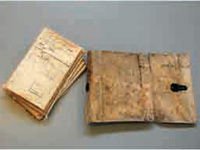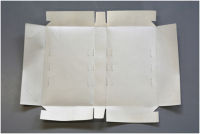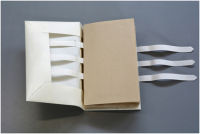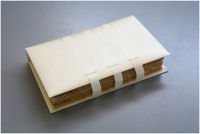 Image 1: Notebook with detached original cover
Image 1: Notebook with detached original cover
This small notebook records Thomas Molyneux's personal expenditure at Oxford, and also contains household notes of linen, candles, and chimney-sweeping at Loseley House from 1680 to 1750 (reference LM/1087/2/3). The original cover was in such a poor state that it had to be removed. It has been replaced with a limp vellum (calf skin) binding which provides alternative and suitable protection to the book while allowing access to the text with minimum stress to the pages and its structure. The original cover has been retained with the conserved item.
 Image 2: The first step in making this binding structure is to secure the repaired pages together by sewing them onto vellum tapes.
Image 2: The first step in making this binding structure is to secure the repaired pages together by sewing them onto vellum tapes.
Limp vellum binding is a very general term used to describe a wide variety of structures where the text block and cover are prepared separately. This style of binding gained popularity in the 13th and 14th centuries as a result of a growing demand for books, and provided an economical and functional alternative to stiff board bindings. Some of the early styles have been adapted for conservation rebinding.
 Image 3: The next step is to prepare the cover made from a single piece of vellum cut and measured to the size of the text block. The design of the cover uses cuts for the vellum tapes which attach the text block to the cover. Tabs and folds serve to form the edges and corners of the cover.
Image 3: The next step is to prepare the cover made from a single piece of vellum cut and measured to the size of the text block. The design of the cover uses cuts for the vellum tapes which attach the text block to the cover. Tabs and folds serve to form the edges and corners of the cover.
 Image 4: The tapes are laced through the vellum cover so that the text block is firmly secured but with sufficient flexibility to allow the book to be opened easily.
Image 4: The tapes are laced through the vellum cover so that the text block is firmly secured but with sufficient flexibility to allow the book to be opened easily.
Image 5: The tapes also serve as fasteners to keep the book closed and secure from any drops and collisions. Vellum is a very durable material.
 As well as providing necessary protection, the binding has an aesthetic and tactile appeal, appropriate to a 17th century volume, which gives added pleasure to whoever has the privilege to hold it.
As well as providing necessary protection, the binding has an aesthetic and tactile appeal, appropriate to a 17th century volume, which gives added pleasure to whoever has the privilege to hold it.

